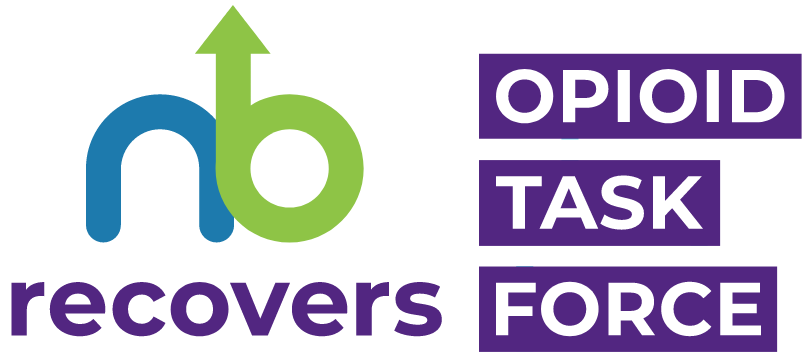Signs and risks of an overdose
Signs of an opioid overdose:
- Face is extremely pale and/or clammy to the touch.
- Body is limp.
- Fingernails or lips have a blue or purple cast.
- Vomiting or making gurgling noises.
- Cannot be awakened from sleep or is unable to speak.
- Breathing is very slow or stopped.
- Heartbeat is very slow or stopped.
Common Risk Factors for Opioid Overdose:
- Mixing opioids with other drugs, particularly alcohol or sedatives.
- Resumption of use after a period of abstinence from opioid use, such as recent release from a rehabilitation center or from incarceration.
- Elderly persons may forget that they already took their medication and accidentally re-take the same medication.
- Younger age, specifically the teens or early 20s exposed to peer pressure or a social environment where there is drug use.
How to Use Fentanyl Test Strips
Harm Reduction in Connecticut
Harm reduction designs & promotes evidence based public health interventions that minimize the harmful effects of drug use.
Harm reduction understands drug use as a complex, multi-faceted issue.
Harm reduction focuses on behavior – especially when related to housing, employment, parenting, and other relationships.
Harm reduction works to reduce stigma - click here for information about how language matters.
Harm reduction is a perspective and set of practical strategies to reduce the negative consequences of drug use, incorporating a spectrum of strategies from safer use to abstinence.
Harm reduction recognizes that drug use exists along a continuum and that abstinence can be one of many goals. It recognizes that people who use drugs are much more than their use, and that drug related harm cannot be assumed.
Opioid misuse
Opioids are a class of narcotic medications that a doctor may prescribe to relieve pain- Oxycontin, Codeine, Morphine, Vicodin, Demerol & Percocet are all legal medications. Illegal opiates include street drugs like Heroin and synthetic opiates, Fentanyl & Carfentanil.
While pain relievers are generally safe when taken for a short period of time, under a doctors supervision, they are frequently misused. Regular use of these pain killers, even when prescribed by a doctor, can result in dependence.
Why are opioids dangerous?
Opioids are designed to relieve pain, but when taken in excess the body's automatic drive to breathe is diminished. Mixing an opiate with alcohol and/or benzodiazepines, can be fatal as these substances also slow your respiratory system.
Fentanyl, a synthetic opioid 100 times more potent than morphine, is a major driver of recent opioid overdose deaths. Fentanyl is responsible for at least half of the 64,000 deaths that occurred in 2016, because it is often mixed into drugs like heroin or cocaine without warning.
Misconceptions about Opioids
Children and teens often perceive prescription drugs to be safe because they are legal medications that parents are commonly seen using. However, prescribed medications are to be taken in proper doses only by the person who received the prescription from a doctor. Opiates do not work the same way for everyone and can lead to serious health problems or accidental death. Only one in five Americans consider prescription pain medication to be a serious safety threat. (NSC, 2015)
STORING MEDICATIONS
All opioids should be stored in their original packaging.
Don’t store them in places medicines are usually kept, such as in a bathroom or kitchen cabinet. Instead, place them in a locked cabinet, lockbox, or other location where people can’t easily access them.
Carefully note when and how much medicine you take in order to keep track of how much is left.
DISPOSAL OF MEDICATIONS
If you received specific disposal instructions from your healthcare provider (e.g., doctor, pharmacist) for your unused or expired medicine, you should follow those instructions to dispose of your medicine. By far, the best drug disposal option is a drug take-back location, which may be found in retail, hospital, or clinic pharmacies; and/or law enforcement facilities.
When a take-back option is not readily available, there are two ways to dispose of prescription and over-the counter (OTC) medicine, depending on the drug.
Flushing medicines: Because some medicines could be especially harmful to others, they have specific directions to immediately flush them down the sink or toilet when they are no longer needed, and a take-back option is not readily available. Check the label or the patient information leaflet with your medicine, or consult the U.S. Food and Drug Administration’s list of medicines recommended for disposal by flushing when a take-back option is not available. Because flushed medicines can get into our lakes, rivers, and streams and potentially alter the behavior and physiology of fish and aquatic organisms, please limit flushing to medicines that are on the FDA flush list and only when no take-back option is feasible.
Disposing medicines in household trash: Almost all medicines, except those on the FDA flush list, can be thrown into your household trash. These include prescription and over-the-counter (OTC) drugs in pills, liquids, drops, patches, creams, and inhalers.
Follow these steps to dispose at home:
- Remove the drugs from their original containers and mix them with something undesirable, such as used coffee grounds, dirt, or cat litter. This makes the medicine less appealing to children and pets and unrecognizable to someone who might intentionally go through the trash looking for drugs.
- Put the mixture in something you can close (a re-sealable zipper storage bag, empty can, or other container) to prevent the drug from leaking or spilling out.
- Throw the container in the garbage.
- Scratch out all your personal information on the empty medicine packaging to protect your identity and privacy. Throw the packaging away.
- If you have a question about your medicine, ask your health care provider or pharmacist.
NEW BRITAIN POLICE DROP-OFF
ACCEPTED:
Household medicines that include:
- Prescription medications (including controlled substances)
- Over-the-counter medicines
- Vitamins and supplements
- Pet medicines

